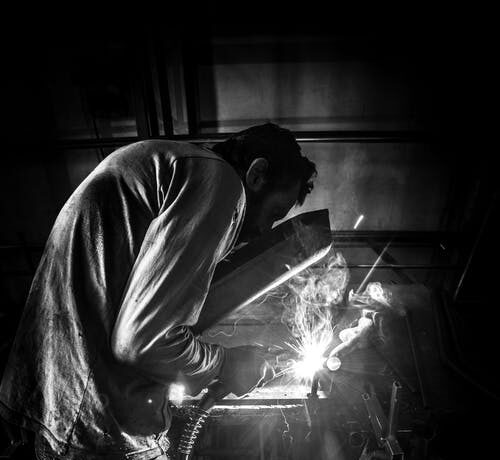With the number of safety and health risks associated with welding, choosing the right welding helmet for DIY crafting at home or workplace projects can be challenging. If you have decided to purchase a new helmet and have no idea of where to start, there are a few things that you need to take into consideration before you select a welding helmet.
Here are the most important features you need to look out for.
Number of Sensors
The number of sensors in welding helmets vary greatly, with hobby level helmets used for simple DIY welding at home having around 2 sensors, and industrial grade helmets having up to four sensors. More sensors in a helmet mean better coverage, especially when doing out-of-position welding where a sensor could be obstructed.
Three sensors are sufficient for production work or when you have a clear line of sight to your work. Four sensors are optimal for most out-of-position or fabrication work. Whether you’re buying a single fixed shade or variable shade lens welding helmet, take a look here, it’s important to look at the exact number of sensors provided to match your welding needs.
Viewing Size of the Helmet
To ensure quality welding work, you need to be able to see what you’re doing. One of the most important features to look out for is the size of the viewing screen. The size you’ll need largely depends on the type of welding you do. The bigger the viewing screen, the more clearly you’ll be able to see, especially for beginners and when working at odd angles. A good helmet should also have a lens on each side to give you a 180-degree view of your welding project.
Adjustable Sensitivity and Delay Control
Adjustable helmet sensitivity and delay controls are a must-have when buying a welding helmet, as they allow you to manually adjust how sensitive the lens should be to infrared rays and UV light, as well as how long the helmet lens should stay dark once you’ve finished welding. You may wonder why the helmet lens can’t do this automatically, but the power of the rays and light that come from the welding depend on the type of welding you’re doing.
As a rule of the thumb, if you’re going to do your welding work at a very low amperage, your helmet lens sensitivity should be higher, to make the arc detection quicker. Alternatively, if you’re doing high amperage welding work, your helmet lens should remain darker for longer. An EHS Today safety guide notes that choosing the right auto-darkening welding helmet is critical to ensuring eye and face protection.
Lens Reaction Time
Lens reaction time, also know as switching speed, is the time it usually takes for the lens to go from inactive to active. This is an essential safety feature found in auto-darkening welding helmets. The faster the lens is able to switch from one shade to another, the less likely you’re to suffer from the potential side effects of being exposed to ultraviolet light, which can easily damage your retinas and even cause blinding. Shades that drag can also lead to eye fatigue.
Helmet Weight and Head Gear Adjustments
The best welding helmet should be lightweight and comfortable to wear. For welding beginners, the weight of a helmet may seem to put some strain on your neck, but with time, you get used to it. The most important thing is buying a lightweight helmet, especially if you’ll be welding regularly. A great welding helmet should also come with adjustable harnesses so you can fit your helmet comfortably on your head.
Conclusion
It’s worth investing in a quality welding helmet. Whether you’re a hobbyist type of welder or a professional welder working on large projects, it’s important to always put your safety and health first. If you’re a beginner, it’s advisable to familiarize yourself with some welding 101 tips, according to Popular Mechanics.







